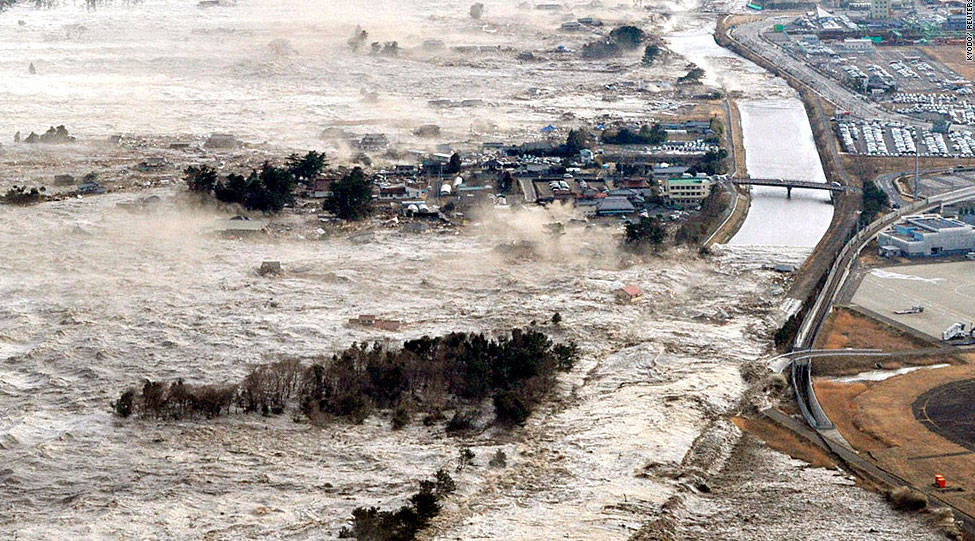
Over the past three years, Pakistan, for example, has been hit by dozens of earthquakes. In March 2005, 80,000 people died under the rubble there. On October 30, the last time nature went on the rampage, there were hundreds of victims. Tens of thousands of people drowned during an overwhelming Asian tsunami at the end of 2004. China and Afghanistan have been rocked by quakes again more recently.
These natural disasters, which have swept our planet in recent years, indicate that the world has entered an era not only of a political, but also of climatic instability. Most scientists - biologists and environmentalists - tend to blame the human race for the catastrophic climate change on the Earth. No doubt, the greenhouse effect due to industrial activity plays a considerable role in global warming, but there are other reasons worth considering.
The Earth is rotating around its own axis slower. The International Earth Rotation Service has regularly added a second or two to the length of a 24-hour day in recent years.
This is the main reason, according to Igor Kopylov, professor at Moscow Energy Institute, why the planet - a gigantic electrical machine - has had its energy balance upset. He expressed this viewpoint in 2004. Kopylov is convinced that the Earth has entered the first phase of a global change. A weakening of the Earth's magnetic field was first registered early in the 20th century, and a consistent drop in the speed of rotation, in the late 1980s and early 1990s. It has been established that when the Earth's rotation slows by one second a year, it releases a tremendous amount of heat, hundreds of times the volume of energy released by human industrial activity.
If we accept that all processes on Earth run according to cosmic cycles, which, in turn, depend on the Solar System's position in our Galaxy, then humankind may be facing another Great Flood.
The Solar System, including the Earth, travels through the Galaxy in spiraling elliptic paths. The cycle time for the larger spiral is 200-210 million years, and for the smaller one, which determines minor galactic cycles, 26,000 years. Correspondingly, half a cycle lasts 130 centuries. This period almost exactly coincides with the date of the last Flood, the occurrence of which was real. The myths and legends of many peoples including that of the Bible recorded the event.
The Flood has been dated rather precisely: at 11,100 BC. If we accept that the civilized society on Earth has been developing for 400,000 years, then this period saw 30 great floods, and we are witnessing the beginnings of the thirty-first flood.
The cosmic cycles are so gigantically long by human standards that they have little impact on the life of people, but the active initial phase of the galactic cycle is of vital importance for the development of civilization. In the view of Russian scientists, the Earth currently finds itself at precisely this point in the cycle.
The transitional process in the electrical machine "planet Earth" can be divided into three phases. During the first - lasting 300 to 500 years - a relatively quick change in the direction of cross current (according to the law of electric machines) will alter the Earth's magnetic field, with the Northern magnetic pole shifting to the eastern part of the Arctic Ocean.
This change in the Earth's magnetic field is accompanied by strong magnetic storms, earthquakes and disastrous atmospheric events caused by a change in the circulation of oceanic waters and the atmosphere.
Comment: Strong magnetic storms, check. Earthquakes increasing, check. Disastrous atmospheric events (increased storms, precipitation, electrical discharge, etc), check. Change in the circulation of oceanic waters, check. Change in the circulation of the atmosphere, check.
Other indications of the planet slowing down (or having already significantly slowed down) are the gaping sinkholes opening up, the increased volcanic activity - above and below water - and the 'strange sky sounds'.
The change in the magnetic field leads to changes in the Earth's ozone layer, which cause abrupt leaps in the biosphere's evolution owing to the altered level of radiation.
Comment: 'Leaps', possibly, but also 'plummets'...
Is Solar and Cosmic Radiation Playing Havoc With Life on Planet Earth?
As the average temperature of the planet rises, ice glaciers begin to thaw, raising ocean levels across the world.
The first, "warm" phase of the transitional period is the shortest and most active. This period witnesses a relatively fast braking of the planet and the release of tremendous amounts of heat, leading to global warming.
Comment: Such a phase is long over now:
Global warming stopped 16 years ago, reveals Met Office report quietly released
In the second phase, the magnetic field will stabilize. The Earth will slowly increase its speed of rotation, and the electrical machine "Earth" will revert to near normal speed. The increased speed of rotation will bring on a cold spell, the ice glaciers will regain their mass, and the oceans will displace their former volumes.
In the third phase, the transitional period will end, the speed of Earth rotation will stabilize, and the planet's energy balance will return to the conditions of previous millennia.
Following the last Great Flood, people began migrating from East to West. Are we now to see a great exodus to the East?
It looks as if we should give serious thought to developing Siberia ...



[Link]
[Link]